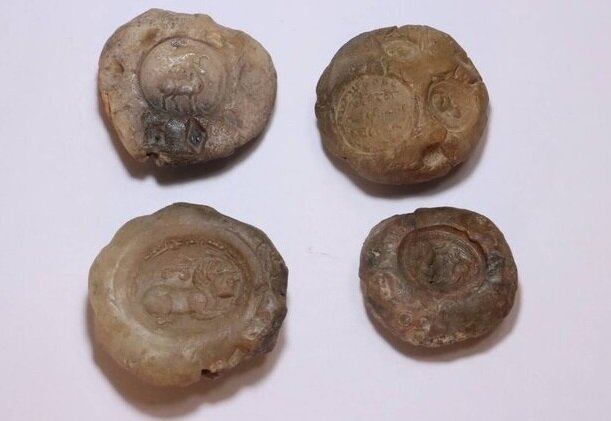Centuries-old clay seals depicting lifelike, mythical figures restored

TEHRAN - Ancient clay seals have undergone recent restoration and documentation in Semnan province, displaying a variety of themes from lifelike figures to mythical creatures.
Housed at the Shahrud Museum, these seals underwent complete desedimentation, eliminating surface pollution and mud accumulation, as reported by Merh on Sunday.
Arezu Golkar, who is in charge of Semnan cultural heritage museums, described the soft clay as being colored in ocher and pea red tones, featuring a central large stamp surrounded by one or more smaller ones.
These stamps exhibit diverse motifs, ranging from realistic characters to depictions of mythical animals, symbols, and signs, often accompanied by visible leather strips, she said.
The significance of seals as crucial legal documents across historical eras was also emphasized by the expert. "These artifacts hold immense importance in understanding and reconstructing historical, political, administrative, cultural, and social contexts," she explained.
“A clay seal can symbolize ownership or authority, serving as a means for government officials to inspect and convey vital information regarding power structures to their audience.”
The official, however, did not specify the exact dates or historical periods associated with these clay seals.
According to Iranica, the seals of the eastern Iranian area reflect the composite nature of the region’s culture. On the one hand, this is characterized by the various local traditions and their contacts with South and East Asia and the Hellenistic world; on the other hand, there is the link with the Iranian plateau and its craft traditions, exposed to the influence of the Iranian dynasties from the Achaemenians to the Sasanians that held power in western Asia.
The technique of engraving semi-precious stones with drills and emery flourished in Mesopotamia and the Mediterranean basin in pre-Classical and Classical times, giving rise, on the one hand, to the tradition of Mesopotamian seals, stamps, and cylinders, in all their chronological and regional variants, and on the other to the production of intaglios, those refined engraved gems of the Greek and later the Hellenistic World. Other, local traditions of seals in metal or terracotta developed in some regions of the area, including Central Asia. On the whole, therefore, it is easier to follow the development of the various groups of seals than it is with other craft classes.
The Iranian world, beginning with the glyphics of the Achaemenian period, recalls both the Mesopotamian and the Greek traditions, with the Achaemenian cylinders on one side and the so-called Greco-Persian gems on the other. In the Arsacid and Sasanian periods, local glyptic production was introduced from the Mesopotamian stamp seals of the Achaemenian and Seleucid periods. We also see some intaglios of Hellenistic tradition, probably imported.
AFM
Leave a Comment